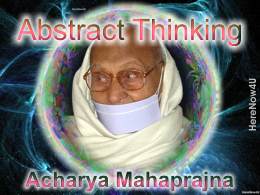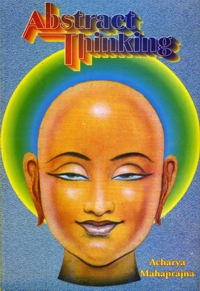
"All grief in the world is born of arms; it is born of attachment and pleasure. Only he who knows the value of disarmament and only he who knows the value of disarmament, fully understands the misery caused by arms in the pursuit of transient pleasure."
Lord Mahavira said:
"Gautam! You must practice self-discipline. Conquer yourself! This is the way to get rid of suffering. Overcome passions, desires and lusts - that is the path of freedom from sorrow,"
"Observe the law of the world:
- No living creature seeks pain!
- Perceive unity in diversity!
- Know that all living beings are equal;
- do not resort to the useof arms.
That is the way to be free from suffering,"
"Conquest of passions, victory over lust and the senses and right vision - these are the ways to be free from sorrow. He, who is equanimous, does not resort to the use of arms. He, who rises above the use of armament, has a tranquil mind. A person with a calm mind is not tormented by the senses - the passions of a man who has conquered the senses (anger, pride, attachment and greed) do not get activated of themselves."
The factor behind the insecurity of the soul is - the fickleness of the senses and the mind. The senses perceive their object and communicate their sensation to the mind. The mind, caught in attachment and aversion, in wanting and not wanting, grows restless. Because of previous conditioning, the voice of the soul is suppressed, and the mind becomes activated. This is non-meditation, unawareness and sorrow. The sadhak, who understands the role of the senses and turns them inwards and has them under control, becomes his own master and self-realised.
If a man steadily pursues his goal, he certainly achieves it. Any slackening of effort weakens one's resolve. There is nothing which tireless endeavour cannot reach. The sadhak turns his gaze within and moves forward. He wants to reach his goal but many obstacles stand in his way. These are - illusion, attachment, hatred, mental instability, lustfulness, etc. Without overcoming these, the sadhak cannot succeed: they hinder self-realization. There is a simple technique for achieving self-realisation. Every sadhak must possess the following qualities:
- Strong faith in one's aim;
- Total dedication;
- Constant effort and long practice for achieving one's goal;
- The practice of asanas, steadiness of body;
- Control over speech;
- To imbue the mind with strong resolutions;
- Control over the mind
He who has control over himself, may be said to have realized himself. On the other hand, the man who has failed to conquer himself, even though he may know a great deal, will never come to realize his soul.
The concluding part of yoga is samadhi, which means 'the state of being established in oneself, wholly separated from the outer phenomena. Here, complete affinity of one's self with the. Supreme Being manifests itself. The still sound of the soul becomes explicit, "I am the supreme spirit, and the Supreme Spirit is me"' - this truth appears to the sadhak even in the lower stages of samadhi. In fact, from the point-of-view of ultimate truth, the nature of the soul is indivisible from that of the Supreme Spirit. There is diversity in the sphere of conduct. The worshipper of unity, after having crossed the circle of diversity enters the sphere of oneness. Samadhi is the highest staircase to merge with the Supreme Being. Absorbed in meditation, the yogi quite transcends the outer environment. Who is he? To whom does he belong? How? Where? He goes beyond all these. He is not conscious of even his own body. He is so rapt in self-awareness and inner bliss, that nothing seems to exist outside himself.
From the viewpoint of unity, samadhi constitutes a merger with the supreme spirit, and from the viewpoint of diversity, it is equivalent to a soul itself, becoming the Supreme Spirit. The perceivers of unity are impatient to merge the soul with the Supreme Being. The independent entity of the soul is manifested there in a different way. A synthesis of the two approaches - of the unity and the diversity - of the soul alone can make us experience for ourselves the wholeness of the spirit.
- He, who possesses his soul, possesses the whole world;
- He, who has lost his soul, has lost everything.
- The whole of Jain philosophy revolves round the soul.
- The knowledge of the soul alone is right knowledge.
- Faith in the soul alone is right vision.
- The urge for soul-realization alone is right conduct.
It is said in the Acharang Sutra:
- "He who knows the one (the soul), knows all."
Victory over the self is the highest victory. The preservation of the body while keeping the soul intact is self-discipline, but to lose one's soul in trying to preserve the body can never prove good for the sadhak. Therefore, know the soul; keep it under your control. That is the essence of religion.
Lord Mahavira said:
- Collect all the senses and preserve the soul fore ever. An insecure soul is tied to the cycle of birth and death while a secure soul achieves freedom from suffering.
 Acharya Mahaprajna
Acharya Mahaprajna

